Rare cloisonné enamels sold @ Bonhams
A rare cloisonné and champlevé enamel figure of Guanyin, 18th century. © 2002-2009 Bonhams 1793 Ltd
The tall and graceful figure dynamically posed slightly turned to the left, with the hands held in front, the left hand held in harina mudra and the right holding onto to the left hand, the gilt face with a serene expression below the high chignon covered with a cowl, the robes falling in folds around the body and swaying in the wind, tied at the waist with a ribbon, enamelled with archistic dragons, the hems variously enamelled with foliate scrolls, geometric designs and demi-flowerheads, adorned with beaded necklaces on the chest and bracelets on the arms, wood stand. 43.8cm (17¼in) high. (2). Sold for £305,600
Provenance: an English private collection; according to the family probably, acquired in the late 19th/ early 20th century, and thence by descent.
Early examples of cloisonné enamel figures seem to date from the 17th century and are particularly rare. The heavy gilt wiring, the demi-flowerheads and chilong dragon decoration on the robes, all point in dating to the Kangxi period. Such early examples are rare as is the particular modelling of the present lot as Guanyin. This particular figure of Guanyin has been exquisitely modelled, the face with a graceful serene expression, the robes naturally cast swaying in the wind.
Compare a cloisonné and champlevé enamel figure of a European, attributed to the 17th century, illustrated by G.G.Avitable, Die Ware aus dem Teufelsland: Chinesische und japanische Cloisonné-und Champlevé-Arbeiten von 1400 bis 1900, Frankfurt am Main, 1981, Catalogue no.98. See also a pair of cloisonné enamel kneeling boys, attributed to the Kangxi period, similarly enamelled with archaistic dragons on their robes, sold at Sotheby's New York, 18 September 2007, lot 156.
A rare cloisonné enamel and gilt-bronze seal, Qianlong. © 2002-2009 Bonhams 1793 Ltd
The rectangular seal with a a loop handle terminating in ruyi-heads, decorated with various floral sprays including lotus, orchid and peony, the handle with an S-scroll, all reserved on a turquoise ground, the seal face reads: Mo yan jing yi ren sheng yi le, which may be translated as 'The Spirit of the Inkstone is One of Life's Pleasures'. 5cm (2in) long. Sold for £21,600
Provenance: Emile Guimet, Paris, inventory no. E.G.1403. The seal has been confirmed as part of the Emile Guimet Collection by his descendant.
As illustrated, one of the handle sides was formerly painted with the inventory mark for the Emile Guimet collection - E G 1403. The mark was unfortunately rubbed off when the seal was cleaned by a previous owner.
A rare pair of cloisonné enamel 'bird and tortoise' candlesticks, Qianlong. © 2002-2009 Bonhams 1793 Ltd
Each bird modelled with outstretched white enamel wings, the feathers well detailed in gilt wire, the head lowered supporting the drip pans, standing with gilt clawed feet atop the green, turqouise and blue enamelled tortoise embracing paired red enamelled serpents, all within a saucer raised on gilt ruyi-head supports, the centre decorated with waves encircled by waves crashing against islands, the rim and base with lotus scrolls, the exterior walls with upright petals. 24.4cm (9⅝in) high. (2). Sold for £20,400
Notes: Similar cloisonné enamel bird and tortoise candlesticks are in important public and private collections. For a single example from the Qing Court Collection at the Palace Museum, Beijing, see The Complete Collection of Treasures of the Palace Museum: Metal-bodied Enamel Ware, Hong Kong, 2002, pl.151; for a pair from the National Palace Museum, Taipei, see Chen Hsia-Sheng, Enamel Ware in the Ming and Ch'ing Dynasties, Taipei, 1999, pl.55. For a similar example from a private collection, see Zhang Xin, ed., Colorful, Elegant, and Exquisite: A Special Exhibition of Imperial Enamel Ware from Mr. Robert Chang's Collection, Suzhou, 2007, p.72; and another, formerly in the Kitson Collection, is illustrated by Sir Harry Garner, Chinese and Japanese Cloisonné Enamels, London, 1970, pl.74B. See also a similar pair sold at William Doyle, New York, on 17 March 2009, lot 287.
All examples, though illustrating an identical concept of design, conveying the wish for 'peace under heaven', show certain variations in their modelling and detail of decoration. Compare the variations in the shape of the saucers, drip pans and tortoises and the enamelled detailing of the waves, lotus scrolls, lappets and feathers. The present lot, though sharing all characteristics with the noted examples, is particularly rare for its variation of form of the bird with its closed pointed beak and upright spread wings.
The creative playfulness and fascination during the Qianlong period with imitating forms of materials extended to the creation of similar objects in different materials. The present lot is an example of this, with similar candlesticks also found carved from jade such as lot 260, carved from spinach green jade and a pair from the Lady Lever Art Gallery Collection, illustrated in S.C.Nott, Chinese Jade Throughout the Ages, Vermont, 1973, pl.XCI.
The tortoise (gui), one of the four revered ancient animals, symbolises the North and is often depicted with a snake, as in the present example. Tortoises represent the creation of all beings and also symbolise longevity, since they were believed to live for ten thousand years. A bird standing at the head of a tortoise relates to the wish for success in the Imperial Jinshi examinations and by implication, a successful career leading to status, wealth and power; see P.B.Welch, Chinese Art: A Guide to Motifs and Visual Imagery, Vermont, 2008, p.106.
A large cloisonné enamel and gilt-bronze rectangular censer and a cover, 16th/17th century. © 2002-2009 Bonhams 1793 Ltd
Cast in the manner of an archaic vessel, the sides decorated in early style on each face with yellow, green and dark blue taotie on a turquoise ground divided by vertical flanges, the tall curling legs with daisy meander, the domed repoussé cover with two dragons pierced through the sheet metal dividing open-winged phoenix beside the high loop handles. Overall 38.5cm (15in) high. (2). Sold for £14,400
Bonhams. Fine Chinese Art, 5 Nov 2009. New Bond Street www.bonhams.com

/https%3A%2F%2Fprofilepics.canalblog.com%2Fprofilepics%2F1%2F0%2F100183.jpg)
/https%3A%2F%2Fstorage.canalblog.com%2F03%2F02%2F119589%2F96711876_o.jpg)
/https%3A%2F%2Fstorage.canalblog.com%2F11%2F31%2F119589%2F94773502_o.jpg)
/https%3A%2F%2Fstorage.canalblog.com%2F20%2F83%2F119589%2F94772815_o.jpg)
/https%3A%2F%2Fstorage.canalblog.com%2F26%2F72%2F119589%2F75604929_o.jpg)
/https%3A%2F%2Fstorage.canalblog.com%2F59%2F60%2F119589%2F26458628_o.jpg)
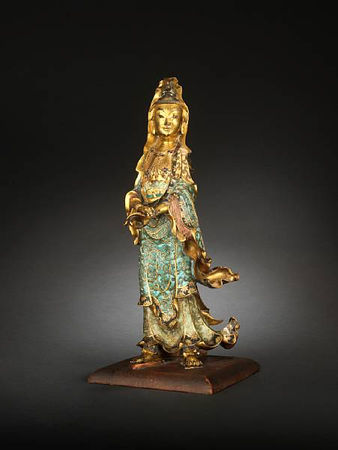
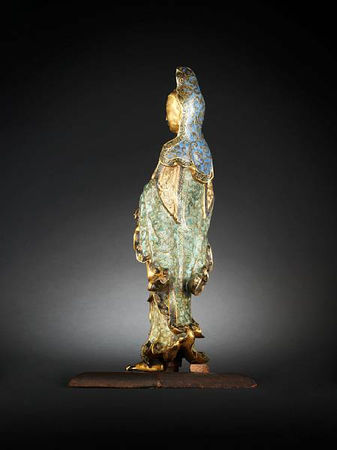
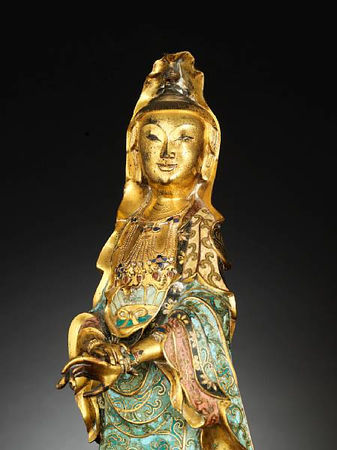

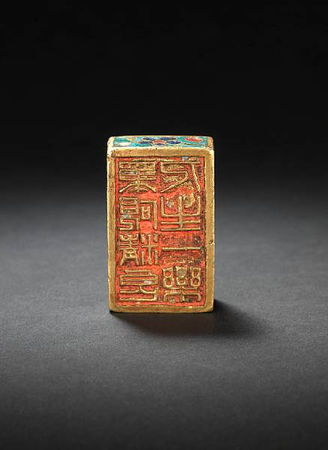
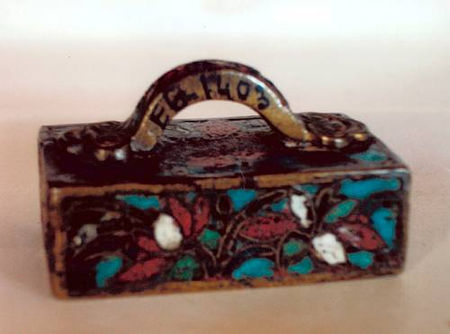




/http%3A%2F%2Fstorage.canalblog.com%2F51%2F84%2F119589%2F122518624_o.jpg)
/http%3A%2F%2Fstorage.canalblog.com%2F42%2F87%2F119589%2F112989160_o.jpg)
/http%3A%2F%2Fstorage.canalblog.com%2F28%2F52%2F119589%2F112495720_o.jpg)
/http%3A%2F%2Fstorage.canalblog.com%2F12%2F27%2F119589%2F96148405_o.jpg)